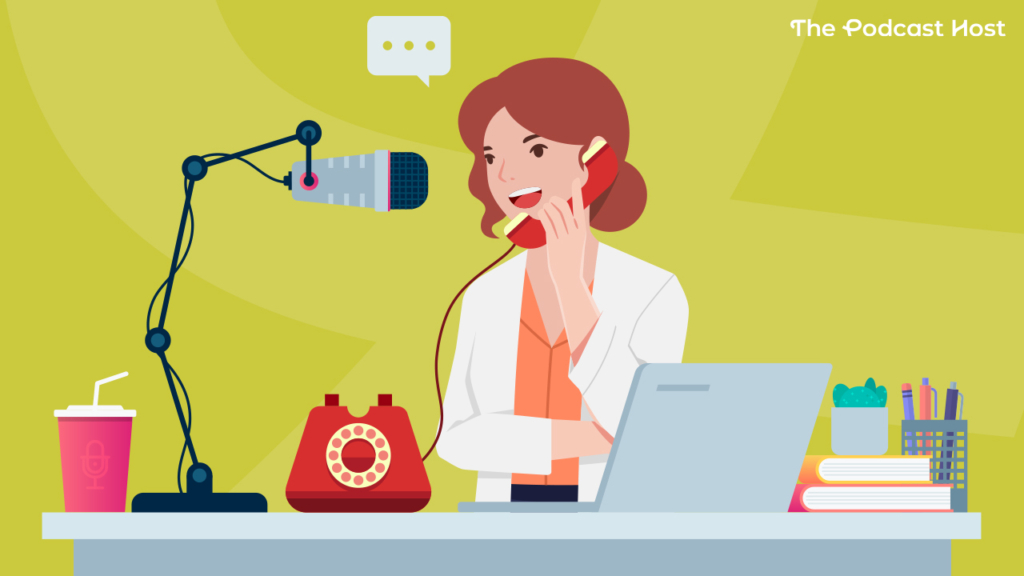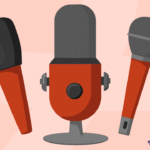Are Built-in Mics Good Enough for Podcasting Yet?
A TV writer friend of mine recently told me a proverb: ‘The shoemaker walks barefoot’* in relation to how someone that works in TV rarely sits down to watch a scripted TV show. I could relate; I spend an awful lot of time trying to make podcasts sound as professional and as polished as possible, including far too much time reading articles about microphone polarities, frequency responses, noise shelves and other terms that would make great band names.
The podcasts I actually listen to for fun are nearly all terribly recorded. I won’t name them for their sake as well as mine. But as Podcast Listener Dev, how well something has been recorded plays far less into what makes me want to listen to a show than what Podcast Editor Dev thinks.
So the question of whether built-in microphones -be they phone, laptop or webcam – are good enough for podcasting is an interesting one, because the simple answer is ‘it depends’.
*(I looked this up later and it turns out the actual proverb is ‘The shoemaker’s children go barefoot’)
What Do Built-in Mics Actually Sound Like?
To get an idea of what we’re working with, I did a little audio test with my phone (a Samsung Galaxy A21s), my Zoom H1 recorder, my webcam (a Logitech C310 HD), and the Rode NT1-A mic I have attached to my desk. Matthew did his own “mic shootout”, too, testing out the built-in mics on his phone, laptop, Zoom H5, and SM58.
From the raw recordings, the webcam is the only one I think is a problem to listen to (add my laptop to the mix! – Matthew). It has a noisy, Zoom call quality to it. The phone mic is perfectly usable for podcasting, at least in the interview/chat podcast format. I’ve edited much worse.
A little EQ, some compression, a touch of noise reduction, and all of these recordings are perfectly serviceable. But are they good enough for podcasting?
Before we can decide that, we, unfortunately, need to turn this little space into a first-year philosophy class by asking: what do we mean when we say ‘good enough for podcasting’?
What Is ‘Good Enough for Podcasting’?
To begin with a vast generalization: podcasting has nearly always been a conflation of two worlds: professional radio, and nerds. For every polished, high-concept, NPR-style creative non-fiction show, there is a tech specialist recording into their headphone mic going point by point through the latest update of Linux. For every You Must Remember This, there’s a show where four friends sit around a table and talk, without structure or length concerns, about their favourite films.
Podcasting is a unique medium where media conglomerates contend with hobbyists; it is the chaotic media utopia the early internet promised us.
Both worlds, professional radio and nerd, are equally valid. But how do we then quantify what is ‘good’ when talking about recording quality?
Let’s imagine we compare two podcasts: one is all Shure SM7Bs but no mic technique, and the other is an interview recorded in an untreated room with one Blue Yeti but is relatively clean without loud plosives or mouth noises.
Which one do we say is better on a technical level?
Very much like a first-year philosophy class, there isn’t really an answer, only more questions. So here’s another one…
Who Is Your Podcast For?
If you’re considering making a podcast and using in-built microphones, an important question that will go some way to helping you decide is: ‘Who is this podcast for?’ because podcasting is different things to different people.
The first podcast I was ever involved with was as a guest on an improv comedy show. I remember sitting in a very warm and sticky study room in the University of Stirling library, playing improv games with some of my friends around a Snowball microphone. Another friend started a movie review podcast as a way to organise weekly cinema trips with their flatmates. That was recorded by placing a Zoom H4n on the coffee table in front of the sofa that everyone sat on and using the internal stereo microphone to record everyone’s musings.
One of my favourite podcasts of all time is Curtis and Morris: Quicktalking Funtime Adventures. Here, two friends, Oliver Morris and James Curtis, write, perform and produce audio letters to each other, experimenting with sound design, building ongoing little stories together but with each host demonstrating their unique way of telling stories. It’s a brilliant encapsulation of the creative possibilities of narrative audio and what can be done in the podcasting medium.
I’ve never seen Curtis and Morris: Quicktalking Funtime Adventures advertised anywhere, the name alone is an SEO nightmare. The only reason I know about it is that I know the hosts. In fact, when I told James Curtis I had been listening he said, ‘Ah, so you’re the reason we’re getting a bump in downloads this week’.
I think hobby podcasting gets a bad rap sometimes, but there is a place for people making podcasts with no resources for fun. If anything, it should get more of a place than it has. It is completely valid and absolutely okay to make a podcast just for the sake of making a podcast. If your answer to the question ‘Who is this podcast for?’ is for you, your friends, your TTRPG group, your study group, or even for no one in particular, then recording quality is much less of an issue. Generally, in-built microphones will do you just fine. As long as you’re okay with the audio quality, then it doesn’t really matter all that much.
But wait! There is another question…
What Do You Want Your Podcast To Be?
When I started making my first audio drama back in 2016, all I had to record with was a cheap $30 condenser microphone and a laptop that sounded like a small helicopter whenever I asked it to do anything. At that point, I was making something for me, and just me. I didn’t think anyone would actually listen to this weird little sci-fi story I was putting together.
I didn’t really have a plan when I made that first episode (which you can still listen to, by the way). I didn’t ask myself the second important question: ‘What do I want this podcast to be?’
If you want to be a bit more serious about podcasting, in-built mics are still a fine place to start, and a good way to test the waters before taking the plunge into the murky world of professional audio recording. Starting with what you know and using the equipment you already have is a smart option. I have advised many, many people interested in becoming podcasters, and some will go on to buy a setup that is, incidentally, more expensive than my own, only for it all to sit and gather dust in the corner of their offices.
That being said, if you want to be a Podcaster with a capital P, sooner or later, you’re going to need a proper microphone, a way to record and edit audio, a logo, a marketing plan, and, if you’re very very very lucky, a budget.
I didn’t ask myself what I wanted my podcast to be. But I knew that the overall goal was that I wanted to make audio my career, so when it was feasible, I upgraded my setup. I got a better microphone, a better computer, and better software. I’m happy to say that it worked in the end (eventually), and while I can’t say that the equipment helped, I think taking myself seriously definitely did.

Audio is Becoming More Accessible
People used to think to record good music, you needed a professional studio, a wall of amplifiers, and a big mixing desk with a bearded engineer wearing sunglasses producing it for you. Then home recording came along and destroyed that mindset. I think podcasting can be that for radio; in fact, it already has been.
In-built phone microphones have gotten pretty good at recording clean audio. Sometimes it’s even preferable: I’ve had actors record parts for audio dramas on their phones. I created a whole ethereal choir of voices made up of phone recordings from listeners for my series Anamnesis. I’ve made entire series based around the curious sonic qualities of phone audio compression.
I think many people are put off making podcasts because podcasters take themselves too seriously (I include myself in that). We want audiences to take our medium seriously, and the only way that will happen is if we project an image of professionalism and quality and, unfortunately, money. There’s a reason why the SM7B has become something of an industry standard, it sounds excellent, and it also looks good. It looks and sounds expensive…because it is.
And that can be discouraging.
Microphones can be expensive, computers are expensive, studios are expensive. Not to mention the vast sea of product information out there and what happens if you spend all your money on the wrong kind of microphone, or a computer that doesn’t quite do what you need it to. Or software that doesn’t quite fit how you work.
Luckily, there are free programs out there for editing audio, there are free audio plugins to help you clean up and level out your episodes, there are places where hosting is free (though always check the terms and conditions for who owns the copyright to your audio), and while I can’t point you to a place where you can (legally) get free microphones, you already have one built into your phone, tablet, or laptop. And it’s as good as anything else out there for turning audio into a podcast.
In short: instead of worrying about tech stuff, go make your podcast. Make it scrappy, make it imperfect, make it in such a way that you make audio nerds like me gasp at the crudeness of it, and make your listeners fall in love with it.

